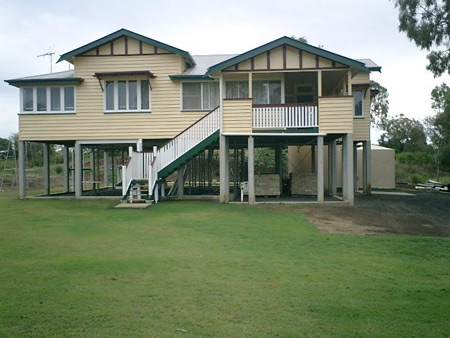
| Search JoyZine with Google Site Search! |
|
The Queenslander
This house, bare of decorative elements, is an early example of the house on stumps. It provides shelter for drying clothes during the wet season.
It has also been suggested that the height of stumps was increased in low-lying coastal and river flat lands in some country towns which were subject to periodic flooding.
Later examples suggest that people found this 'nakedness' somewhat embarrassing and therefore tried to hide the stumps by surrounding them with panels of timber strips or some other decorative material. The effect, in many cases, was a little forced and the whole exercise invariably looked like an afterthought. All the same, it is possible to find houses where such decorative treatment has been able to successfully achieve visual harmony with the rest of the structure, thus giving the impression of a double storeyed, well-knit and unified dwelling. Text from: Balwant Saini and Ray Joyce, The Australian House: Homes of the Tropical North. Landsdown Publishing, Ltd, (Sydney), 1982. |


 Some owners maintain that such houses are safely and conveniently positioned well above mosquitoes, snakes and cane toads; and that, further, they catch welcome cool breezes. The latter explanation, however, makes little sense on a flat site in an urban area where a concentration of houses on high stumps may effectively impede the flow of air throughout the neighbourhood.
Some owners maintain that such houses are safely and conveniently positioned well above mosquitoes, snakes and cane toads; and that, further, they catch welcome cool breezes. The latter explanation, however, makes little sense on a flat site in an urban area where a concentration of houses on high stumps may effectively impede the flow of air throughout the neighbourhood.
